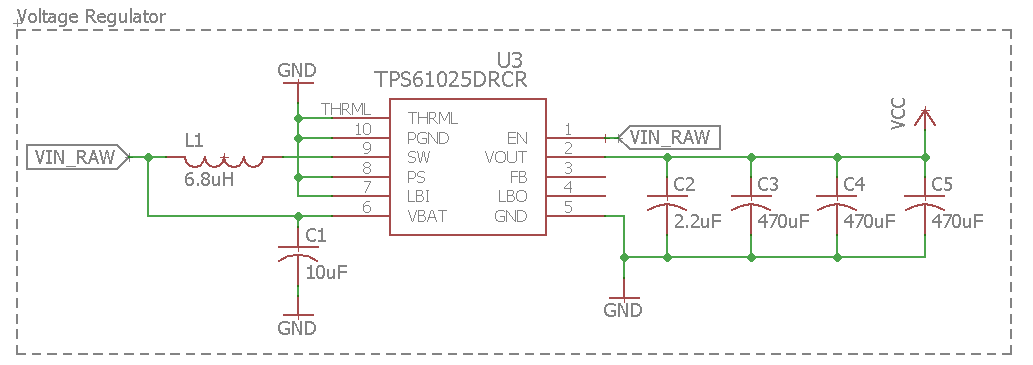I'm currently using Texas Instruments TPS61025DRCR voltage regulator in a project (digikey link. When attempted to be powered with a 3V input, the regulator input voltage drops down to ~1.4V. When I unplug the 3V power source and measure its voltage, I again receive 3V. Thus, the issue has something to do with interfacing with the regulator.
My regulator circuit is illustrated below.
Note that this circuit was influenced by the TPS61025DRCR manual here.
Here is what I have done to troubleshoot the issue so far:
- Because VIN_RAW (per my diagram) is dropping to 1.4V, I first checked to make sure that there was no short circuit from VIN_RAW to GND. I was able to verify that VIN_RAW is not short circuited anywhere.
- I next verified that none of the solder on the pins had bridged.
- I then verified that the VCC (voltage regulator output) was not short circuited (or had low resistance to ground).
I'm looking for a little feedback on other potential errors. Things I can think of:
- I used too much hot air when soldering and just broke the chip.
- There is something wrong with how I designed my circuit.
Any ideas?

